Radishes are diverse vegetables found worldwide, varying in shape and size. They range from the familiar round red radishes with leafy green tops to the knobby brown horseradish root. They even include the watermelon radish with its green exterior and vibrant pink interior. Let’s pay attention to the large, mild-flavored daikon radishes, which are commonly used both raw in salads and cooked in dishes like kimchi. Their versatility allows for various culinary uses, from roasting to pickling.
What Are Radishes?
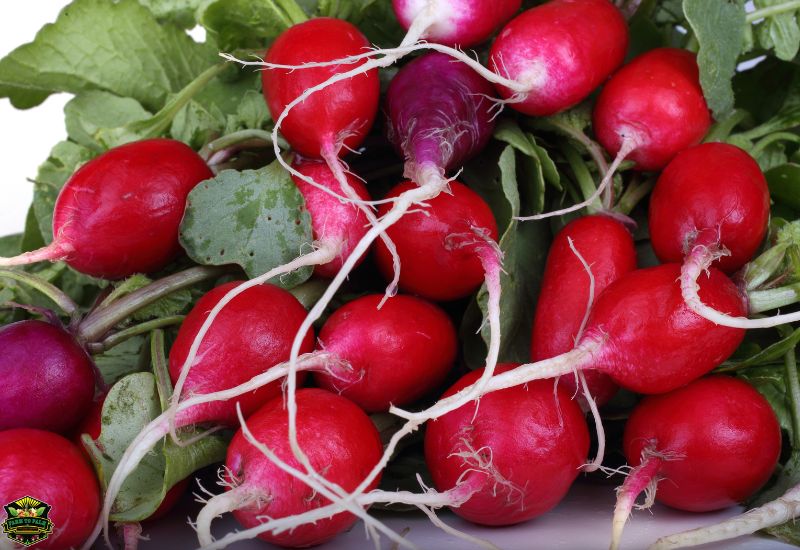
Radishes, or Raphanus sativus, are delicious root vegetables in various shapes, from round to oblong or tapered. They belong to the brassica family, which includes kale and broccoli, and they have a distinctive peppery flavor.
Radishes are easy to cultivate, with a quick harvest time of just 30 days, and they also help to repel garden pests. They are found in cuisines all around the world, they are affordable, and they require minimal preparation since they can be enjoyed raw.
Nutritional value of Radishes
| Nutrition Facts for Radishes (per 100 grams) | Amount | % Daily Value |
|---|---|---|
| Calories | 16 | |
| Total Fat | 0.1 g | 0% |
| Saturated Fat | 0 g | 0% |
| Cholesterol | 0 mg | 0% |
| Sodium | 39 mg | 1% |
| Potassium | 233 mg | 6% |
| Total Carbohydrate | 3.4 g | 1% |
| Dietary Fiber | 1.6 g | 6% |
| Sugar | 1.9 g | |
| Protein | 0.7 g | 1% |
| Vitamin C | 24% | |
| Calcium | 2% | |
| Iron | 1% | |
| Vitamin D | 0% | |
| Vitamin B6 | 5% | |
| Cobalamin | 0% | |
| Magnesium | 2% |
*Percent Daily Values are based on a 2,000 calorie diet. Your daily values may be higher or lower depending on your calorie needs.
What do Radishes taste like?
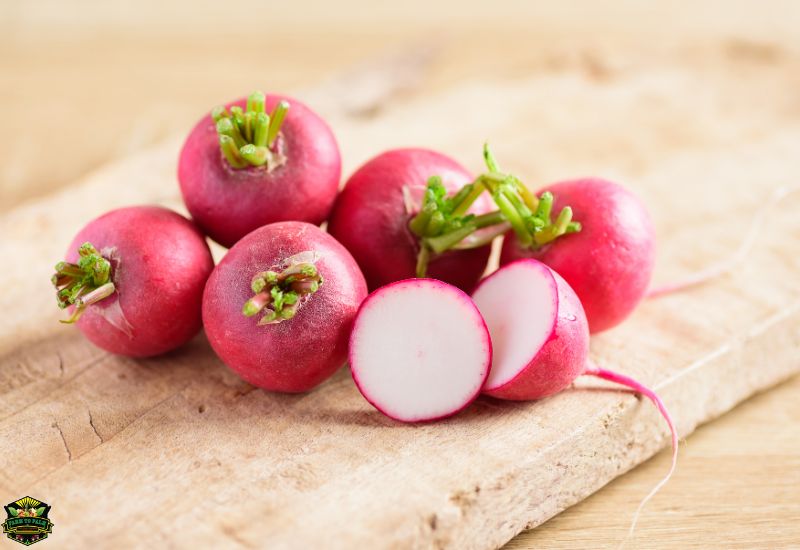
When eaten raw, radishes offer a spicy, crisp, and zesty flavor. They come in various varieties, from very spicy (like raw garlic) to very mild – for example, Daikon radishes are more favorable than red radishes. Cooking brings out their sweetness and reduces the spiciness.
Radish leaves, or greens, are edible and have a mild spinach flavor. However, some people find the fuzzy texture of raw radish leaves off-putting, so cooking them is recommended. They also make a great alternative to basil if you’re making pesto and want to reduce food waste!
Types of Radishes
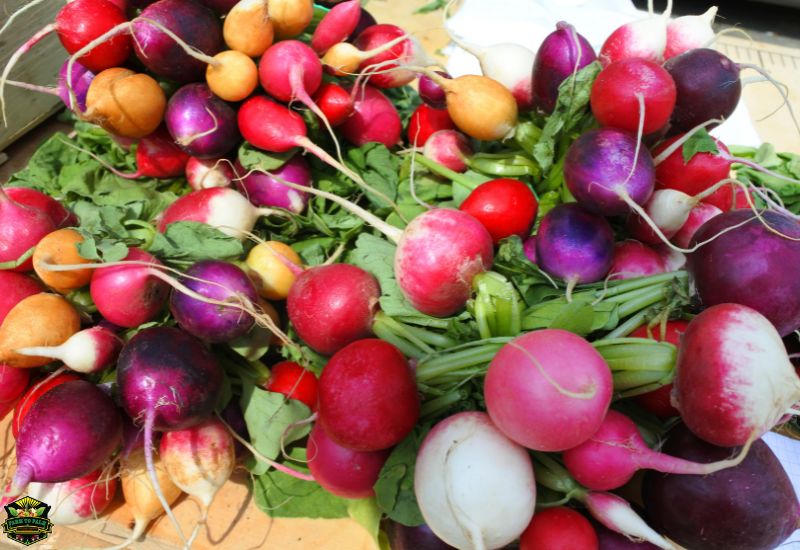
Discover 12 radish varieties to add texture, color, and flavor to your meals. From well-known daikon and Cherry Belle to heirloom varieties like watermelon radishes, there’s a wide range of options to explore.
Radishes are a common root vegetable. Over 100 varieties are available in different colors, shapes, and sizes, each with unique flavor and nutrients. They can be enjoyed raw, roasted, pickled, and more.
Learn about various radish types, their flavors, and how to use them. For more ideas, check out my post’s radish recipes and tips on using radish greens.
Red Radish: Enjoy raw in salads, pickled, or sautéed as a simple side dish.
Daikon radish: These are popular in Asian cuisine and can be added to stir-fries, boiled or baked, steamed, or turned into fries.
French breakfast radish: Enjoy as a snack or in salads, or cook by sautéing, roasting, braising, or stir-frying.
Watermelon Radish: Used to garnish dishes like salads and Buddha bowls due to its vibrant color.
White Icicle Radish: Sauté with butter or olive oil, turn them into chips or add to soups, stews, and curries.
Cherry Belle Radish: Use raw or cooked to add crunch and flavor to dishes.
Green Meat Radish: Add to sandwiches, wraps, and tacos for a crunchy texture.
Black radish: This vegetable is best when cooked, such as roasted or sautéed, but it can also be eaten raw in salads.
Sparkler Radish: Works well in salads and tastes fantastic when slow-roasted.
Malaga Violet Radish: Add color and crisp texture to salads or roast in the oven.
White Hailstone Radish: Perfect for enjoying raw in salads, marinated salads, slaws, as part of a cheese board, or pickled.
Helios radish: This radish works well in raw and cooked applications, including roasting with other root vegetables or blending into a puree.
For the mildest radish kinds, try French Breakfast or white hailstone. For the spiciest flavor, use Spanish black radishes. Cherry Belle/Red radishes fall somewhere in the middle.
Enjoy radishes raw as crudites with dips, shredded into a slaw, added to salads, pickled, or sautéed. You can also roast or grill them as a simple side dish. For more tips, check the blog post!
What are Radishes good for
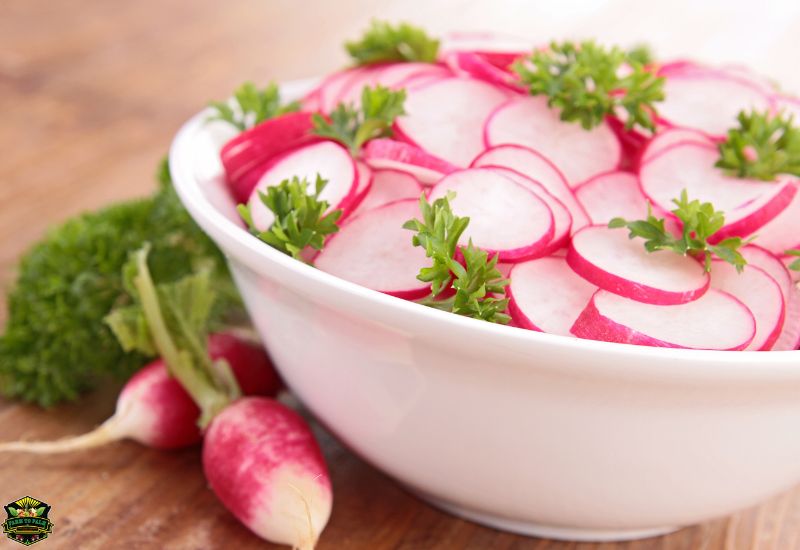
Radishes are packed with antioxidants like catechin, pyrogallol, and vanillic acid, which help fight free radicals in the body. Free radicals have been linked to various diseases, including cancer. Additionally, radishes are rich in vitamin C, which provides protection for your cells.
Likely Health Benefits:
Lower Risk of Diabetes: Radishes contain compounds like glucosinolate and isothiocyanate, which may help regulate blood sugar levels and provide energy. They also contain coenzyme Q10, which has shown promise in blocking the formation of diabetes in animals.
Cancer-Fighting Properties: Studies suggest that radish leaves have antioxidants that protect against various cancers, including liver, colon, breast, cervical, prostate, and lung.
Better Liver Function: Compounds in radishes help trigger enzymes that aid in detoxifying the liver.
Lower Risk of Heart Disease: The nutrients in radishes, such as vitamin C, calcium, and potassium, can help control blood pressure, reducing the risk of heart disease.
Healthy Digestion: Radish leaves are beneficial for gut health and may aid in reducing obesity. They also contain more fiber than the roots, which helps prevent constipation.
Antifungal Properties: Radishes have natural antifungal properties, potentially inhibiting the growth of fungi causing infections.
Benefits of Radish Leaves
Radish leaves are often overlooked but offer numerous health benefits:
Nutrient-Rich: Radish leaves are the most nutritious part of the plant, containing more protein, calcium, vitamin C, and antioxidants than the roots.
Alzheimer’s Protection: Compounds in radish leaves may improve brain function and memory, potentially offering protection against Alzheimer’s disease.
Anemia Management: The high iron content in radish leaves can benefit individuals with anemia.
Blood Pressure Regulation: Studies suggest that radish leaf extract may help lower blood pressure by increasing sodium and potassium excretion. Further human studies are needed to confirm these benefits.
What to do with Radishes?
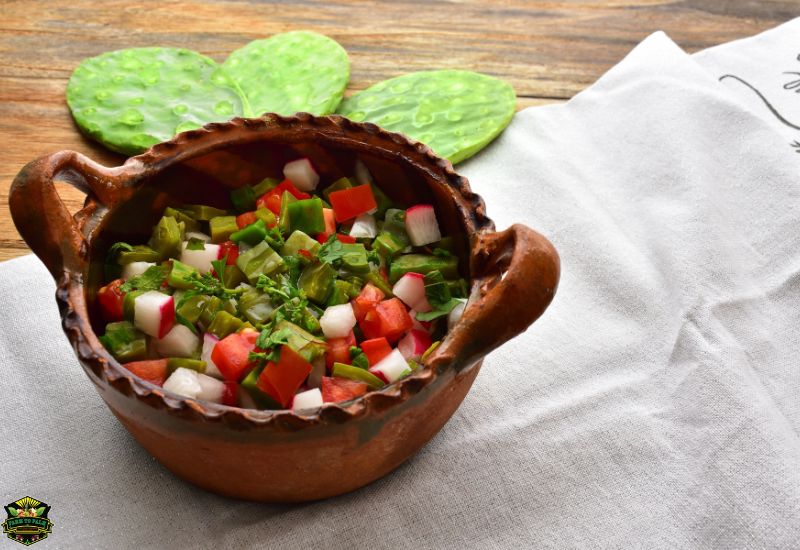
Radishes are a versatile ingredient that can add color, crunch, and a peppery flavor to various dishes.
They can be enjoyed raw in salads, grain bowls, avocado toast, tacos, sandwiches, slaws, rice paper rolls, pasta dishes, and as a simple snack with a sprinkle of salt.
You can also cook them by sautéing, roasting, or grilling to tame their heat and bring out their natural sweetness.
There are plenty of delicious radish recipes to explore, making them a great addition to your meals.
How to store Radishes?

Radishes should be stored in the refrigerator to avoid becoming mushy and soft. After bringing them home, cut off the stems, wash off any dirt or residue, and wrap the radishes in a damp paper towel.
Then, either place them in a plastic storage bag or leave them as they are before storing them in the crisper drawer. This method will help maintain their texture and consistency for about a week.
Can you freeze Radishes
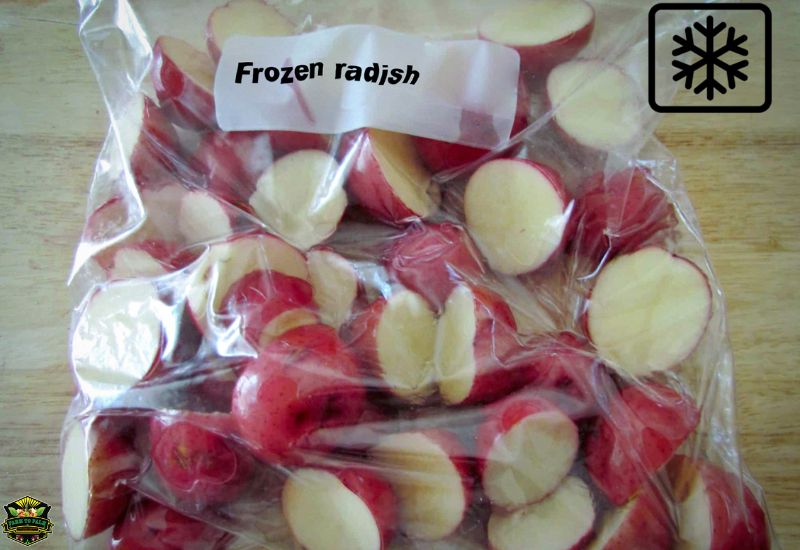
Yes, radishes can be frozen for up to 3 months. However, it’s important to blanch them first to help preserve their texture and flavor.
Here’s how to do it:
- Wash and scrub the radishes well, trim the tops and tails, and slice them into thin, even slices or quarters to ensure they blanch evenly.
- Blanch the radishes in boiling water for 1-2 minutes, depending on the thickness of the slices.
- Transfer the blanched radishes to an ice bath to stop the cooking process and cool them down.
- Dry the radishes thoroughly with a clean kitchen towel, then spread them across a tray in a single layer without touching, and flash freeze them until solid.
- Finally, transfer the frozen radishes to a freezer-safe container or Ziplock bag.
Discover the vibrant world of radishes and add a pop of color and flavor to your meals by purchasing a variety of fresh radishes at Farm to Palm today.
Whether you’re looking to enjoy the peppery crunch of red radishes in your salads, the mild sweetness of daikon radishes in your stir-fries, or the colorful garnish of watermelon radishes in your dishes, Farm to Palm has a selection to suit your culinary needs.
Take advantage of the nutritional benefits and versatile uses of radishes – visit Farm to Palm and elevate your cooking experience!

